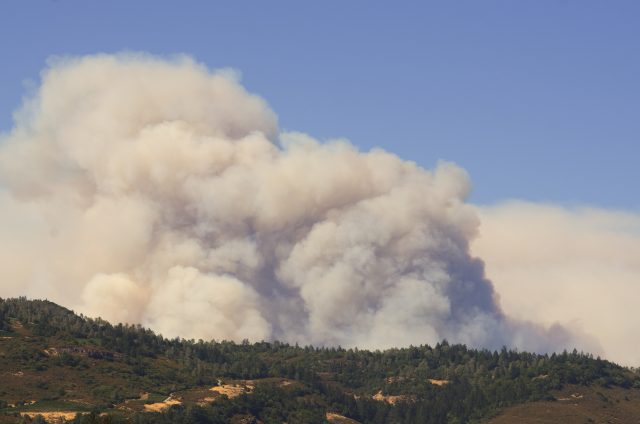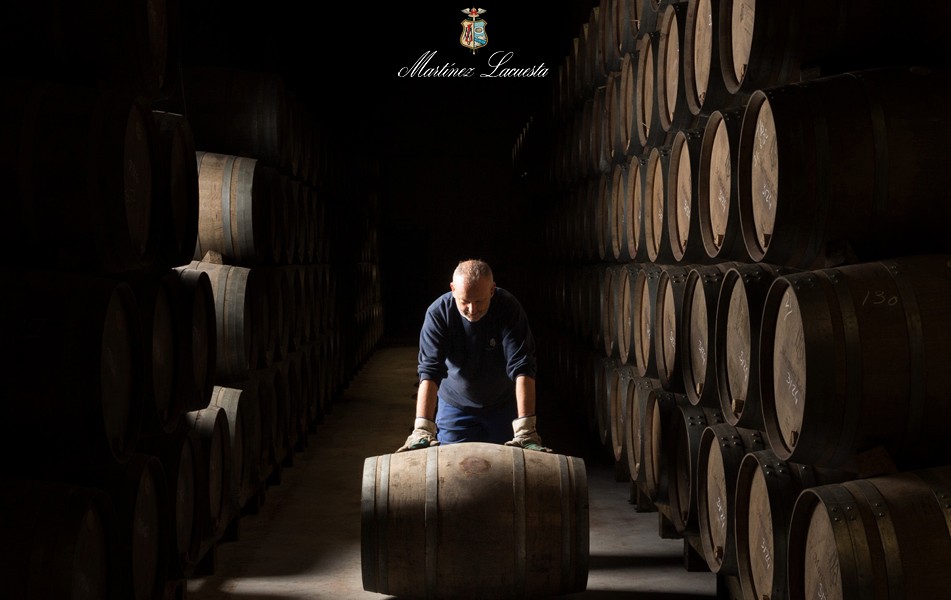Has Napa recovered from its wildfires?
From new-build wineries to abandoned fruit, to what extent have wine producers managed to recover in the four years since the Glass Fire ripped through Napa Valley? Roger Morris reports.

It is a gloomy and rainy February morning atop Spring Mountain – again – but the haunting memories are ones of towering walls of wildfires raging through the arid, autumn mountains of Napa Valley, destroying everything in their paths.
That was almost four years ago, but the scars are still strewn across the landscape as Chris Howell and Katie Lazar take a visitor on a morning walk through the rugged Cain vineyards, located almost on the Sonoma County line.
It rained 7.6 inches in January 2024 in Napa Valley, almost a quarter of the normal annual accumulation for one month, and now the tall, wet grasses are already showing the dark green of an early spring as storm after winter storm sweeps in from the northwest off the Pacific Ocean.
While the Cain vineyards will bear fruit later this year, many of its vines and old trees were destroyed in September 2020 when the Glass Fire swept up mountainside, destroying not only the modern winery but with it Chris and Katie’s home of many years.
Of the more than a dozen wineries damaged by the fire, Cain, Newton, Burgess and Chateau Boswell faced the worst devastation.
“It took us a long time to clear out all the dead trees and vines that didn’t survive,” Howell says, walking down a rutted road. “All the drains had to be replaced and measures taken to prevent erosion. But we are restoring the vineyards.”
There are plans to rebuild a small winery in a different, more-protected corner of the property, they say, but not another home. The two will continue their new life living in the valley and working on the mountain.
Poster child
Later that afternoon, far across the valley and just south of Stags Leap, it is still drizzling as winemaker Priyanka French walks from her trailer office to the entry of a network of brightly lit, spacious hillside caverns – tunnels, really – that will be dedicated this summer as the new home of Signorello Vineyards.
It will replace the old winery that became the poster child for the Napa fires of 2017 when the image of it totally aflame, lighting up the night sky, flashed on television screens around the globe.
Meanwhile, the company that purchased the then family-owned Burgess winery on lower Howell Mountain, less than two weeks before it was struck by the Glass Fire, has relocated the winery in Napa city.
Chateau Boswell along the Silverado Trail is conducting tastings within its hillside cave while awaiting its dazzling new winery to be completed later this year.
Moët Hennessey, which owns Newton, has declined to talk about rebuilding while continuing to make Newton wine at an alternate facility.
With the Glass Fire, in particular, there was the collateral damage of smoke taint throughout Napa Valley and elsewhere, particularly because the late-ripening Cabernet Sauvignon was still hanging on the vines as smoke draped the valley for days.
Partner Content
Lost fruit
“No one in Napa Valley should have made wine in 2020, unless they harvested a variety before 17 Aug,” says Mark Neal, who runs a large vineyard services company as well as owning an eponymous winery on Howell Mountain. “I decided to drop all my fruit.”
Now, it has been almost four years since a serious fire occurred in Napa Valley and while dozens of wineries who suffered some degree of vineyard or structural fire damage are optimistically rebuilding the future, the valley as a whole is taking measures to see that this degree of devastation won’t happen again.
“With an estimated economic damage of US$2 billion to the Napa wine industry in 2020 alone, this became the Napa Valley Vintners’ number one industry issue priority,” says Rex Stults, the NVV’s VP for industry relations.
The response have been a multi-organization approach that has examined and responded to all the multiple aspects of how, if major fires can never be totally avoided, their number can be diminished and their affects lessened.
Avenues of approach are wide-ranging, from incentivising wineries to clear their volatile underbrush to modernising detection and alert systems, from building fire roads and firebreaks to buying better firefighting equipment, from elevating the status of fire-prevention planning to hiring more fire-fighting personnel.
Chief among these efforts was a US$2.1 million grant from Napa Valley Vintners last year to support what it terms “wildfire resiliency” that will:
- Re-establish or create up to 100 miles of strategic fire roads and fire breaks throughout the county
- Establish up to 300 acres of native habitat to reduce wildfire risk and maximize ecological benefits
- Provide resources and education for 400 landowners and residents on forest health and wildfire resilience
In order to accomplish this, the grant brought together a number of organisational efforts including those of the Napa Communities Firewise Foundation (Napa Firewise) and Napa County Resource Conservation District (RCD), collaborating with local and state government offices including Napa County Fire Department, CAL FIRE and non-profits such as Napa County Land Trust and Napa County Regional Park and Open Space District.
This latest funding is in addition to previous gifts to build upon Napa’s wildfire resiliency.
In 2022, NVV underwrote $25,000 in firefighting communications technology to prevent wildfires from getting out of hand and put $33,000 toward wildfire camera monitoring.
And like the aromas from a new vintage, there is an air of restoration in the fire-damaged areas of Napa Valley.
“I like the feeling of the new winery,” French says exiting the vast, open-faced cave that will house all aspects of winegrowing, from offices to tasting room to modern winery to storage library.
“It feels like our bunker, and I like that,” she laughs, anticipating its completion.
“We know that something will go wrong, something we haven’t thought of,” she says. “But that’s what’s exciting about the business.”
Related news
Treasury Wine Estates plans leaner future amid US and China slowdown
The db wine crime files 2025: part 2
Don't pour this Christmas drink down the sink, plumbers caution




